Solitude Good, Isolation Bad
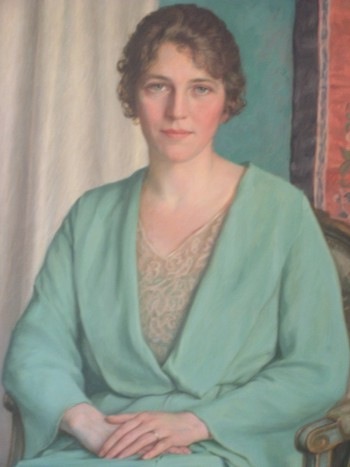
We have talked before about the value of being comfortable with yourself: to find peace in solitude. But that is a very different from trying to live in total isolation.
Everything in the Universe lives in a relationship, and one of the keys to growth and healing is relationship. The establishment and maintenance of relationship is one of the crucial differences between treating and healing.
“The person who tries to live alone will not succeed as a human being. His heart withers if it does not answer another heart. His mind shrinks away if he hears only the echoes of his own thoughts and finds no other inspiration.”
–Pearl S. Buck (a.k.a. “John Sedges,” a.k.a. Sai Zhenzhu, American Missionary in China, Author and, in 1938, Winner of the Nobel Prize in Literature, 1892-1973)
The Real Medicine of the Future
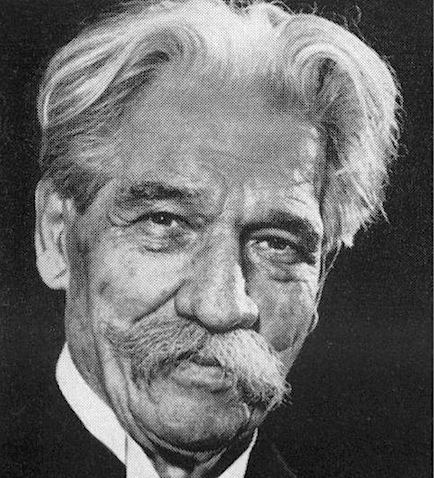
Those of us who have been pushing toward a more comprehensive model of health and healing have talked for years now about the importance of relationship as the key effective component of compassionate care. It’s true that many people still buy into the “Mechanic model” of health care, and are not much interested in anything except a quick fix. “Do something to me: a pill or surgery or whatever. I’m not interested in changing anything in my life, or trying to take control of my future…”
But for those of you interested in empowering yourselves, this is a simple – but beautiful – statement about one aspect of the model of Integrated Health.
“Medicine is not only a science, but also the art of letting our own individuality interact with the individuality of the patient.”
–Albert Schweitzer (Alsatian-born Theologian, Philosopher, Mission Doctor and, in 1952, Winner of the Nobel Peace Prize, 1875-1965)
Teaching People How To Treat Us
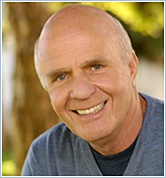
“People treat us the way we teach them to treat us.”
–Wayne Dyer (American Author and Inspirational Speaker, 1940-)
Universe Is a Communion and a Community
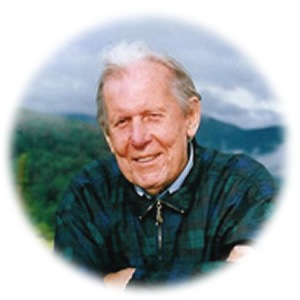
“It is especially important in this discussion to recognize the unity of the total process, from that first unimaginable moment of cosmic emergence through all its subsequent forms of expression until the present. This unbreakable bond of relatedness that makes of the whole a universe becomes increasingly apparent to scientific observation, although this bond ultimately escapes scientific formulation or understanding. In virtue of this relatedness, everything is intimately present to everything else in the universe. Nothing is completely itself without everything else. This relatedness is both spatial and temporal. However distant in space or time, the bond of unity is functionally there.
The universe is a communion and a community. We ourselves are that communion become conscious of itself.”
–Thomas Berry (American Historian, Catholic Priest and Author, 1914-2009)
Organic Organization

“Organisms shape themselves in response to their neighbors and their environments. All respond to one another, co-evolving and co-creating the complex systems of organization that we see in nature. Life is systems-seeking. It seeks organization. Organization is a naturally occurring phenomenon. Self-organization is the powerful force by which Gaia created herself through relationships, creating all the living systems we see. She knows how to organize from the inside out, from partnering with neighbors rather than from imposition and control.”
–Margaret J. Wheatley (American Writer and Expert in Organization Behavior and Systems Thinking, 1944-)
{“Reclaiming Gaia, Reclaiming Life”}

Understanding the Person You Want to Love

“We really have to understand the person we want to love. If our love is only a will to possess, it is not love. If we only think of ourselves, if we know only our own needs and ignore the needs of the other person, we cannot love.”
–Thich Nhat Hanh (Vietnamese Buddhist Monk, 1926-)

“Peace Is Every Step: The Path of Mindfulness in Everyday Life” (Thich Nhat Hanh)
The Looming Crisis of Alzheimer’s

For those of us who lobby for resources, it is no overstatement to say that Alzheimer’s disease has reached crisis proportions in the United States.
As we are getting older, the incidence, prevalence and mortality of Alzheimer’s disease are all rising.
The 2007 Alzheimer’s Disease Facts and Figures report by the Alzheimer’s Association makes sobering reading. Here are some of the headline facts:
- Alzheimer’s disease is the most common cause of dementia
- At the present rate, one in 85 people will have the disease in 40 years
- There are now more than 5 million people suffering from Alzheimer’s disease, and the report projects an increase of 16 million cases by 2050 unless preventive measures are taken and/or science is able to come up with a prevention or cure
- One person is now diagnosed with dementia every seven seconds
- One in every four American families is affected by dementia
- The incidence of dementia is one in 1,000 before age 65 and one in 20 after age 65.
- More than $100 billion is spent per year on dementia, which is about 10 percent of all healthcare expenditures
As we have discussed before, the symptoms of dementia may be delayed for 3 to 5 years through healthy lifestyles and behavior modification, and there are many new treatment approaches in the pipeline.
The huge issue is that statistic about one in four families being affected by the disease. And it is a disease: it is not part of normal aging.
Caregivers can suffer terribly.
The Alzheimer’s Association also has some information for those who care for people with Alzheimer’s.
There is also some food information here concerning caregiver stress.
I would also like to direct you to some of the things that I have written here about the wellness of caregivers.
And for everyone, don’t wait until you are thirsty before you dig that well. Work on building you personal resilience and follow the simple lifestyle guidelines that may significantly reduce your risk of developing Alzheimer’s disease.
Relationships, Conflict and Heart Disease

Robust, dynamic and balanced relationships can be the source of untold support and happiness in our lives. They can also provide us with the scaffolding on which to structure and maintain the health and meaning of our existence.
On the other hand, precisely because positive relationships can be such powerful forces for good, toxic, fractured and unbalanced interactions can create physical, emotional, social and spiritual havoc. Most of the evidence about the physical impact of negative relationships has concerned heart disease and disturbances of the immune system.
An article in this week’s issue of the Archives of Internal Medicine continues to flesh out the interaction between dysfunctional relationships and heart disease, suggesting that If you are in stuck in a close relationship with many negative characteristics, for instance conflict, you may well have a raised risk of heart disease, compared with somebody whose close relationship is more positive overall.
Roberto De Vogli and his colleagues from University College, London, looked at 9,011 British civil servants who filled in a questionnaire about negative aspects of their close relationships during two periods: 1989-1990 and 1985-1988. The main focus was on couples and participants also outlined how much regular emotional and practical support they received from their partners. They were followed up twelve years later to find out whether they had had a fatal or non-fatal coronary event, including chest pain of cardiac origin or a full-blown heart attack.
Of 8,499 people who were followed up and had provided enough information at the start of the study, quite a high number – 589 – had sustained a coronary heart disease event, although none of them had obvious coronary heart disease at the beginning of the study. The analysis took account of multiple potentially confounding risk factors including socioeconomic status and health habits. When they had all been stripped away, the researchers found that there was a 1.34 higher risk of coronary heart disease events among those who experienced a high level of negativity in their close relationships. This link was found in both men and women and in each social class. It could not be explained by depression or negative personality traits: it seemed to be the negative relationships itself that was to blame.
We already know that negative marital interactions are associated with depression, often in combination with reduced self-esteem and higher levels of anger. These are all emotions that can have both acute and chronic effects on the coronary arteries, through alterations in the normal balance of the autonomic nervous system, neuroendocrine changes, disturbances in coagulation and inflammatory and immune responses.
Many people are sensitive to any kind of negative interactions in the people around them, but the effects are particularly toxic if they involve the people closest to us. They are more likely to elicit strong emotions such as worry and anxiety that are the most likely to induce effects on our bodies.
Staying in a chronic negative relationship may be more than just masochistic.
It could kill you.
“Tenderness emerges from the fact that the two persons, longing, as all individuals do, to overcome the separateness and isolation to which we are all heir because we are individuals, can participate in a relationship that, for the moment, is not of two isolated selves but a union.”
–Rollo May (American Existential Psychologist, 1909-1994)
“Whenever you’re in conflict with someone, there is one factor that can make the difference between damaging your relationship and deepening it. That factor is attitude.”
–Timothy Bentley (Canadian Family Therapist)
“Today the network of relationships linking the human race to itself and to the rest of the biosphere is so complex that all aspects affect all others to an extraordinary degree. Someone should be studying the whole system, however crudely that has to be done, because no gluing together of partial studies of a complex nonlinear system can give a good idea of the behavior of the whole.”
–Murray Gell-Mann American Physicist Noted for his Concept of Strangeness and the Discovery of Quarks, and, in 1969, Winner of the Nobel prize in Physics, 1929-
“We shield our heart with an armor woven out of very old habits of pushing away pain and grasping at pleasure. When we begin to breathe in the pain instead of pushing it away, we begin to open our hearts to what’s unwanted. When we relate directly in this way to the unwanted areas of our lives, the airless room of ego begins to be ventilated.”
–Pema Chodron (Formerly Deirdre Blomfield-Brown, American Buddhist Nun, 1936-)
Marriage Makes You…

A Chinese sage once said that if a woman took a pea and placed it in a large jar every time that she had sex in the first year of marriage, and then took out a pea every time that she had sex in the rest of her life, the jar would never be empty.
So many couples seem to think that a declining interest in sex I something to be expected, and agony columns and websites are crammed with complaints. Does it have to be that way? Is it just that people get bored with each other, or are too tired to bother?
Some intriguing new research suggests that there may also be a physical factor, reporting lower testosterone levels among married men compared with single, unmarried men.
The research is reported in this month’s issue of Current Anthropology by Peter B. Gray from the University of Nevada, Las Vegas, Peter T. Ellison from Harvard University and Benjamin C. Campbell from Boston University.
They investigated the links between male testosterone levels and marital status among modern-day cattle farmers from the Ariaal tribe in northern Kenya. Less than 1.5 percent of these men consider that their wives are a source of emotional support. The Ariaal males serve as herd boys until they reach puberty. They then undergo initiation, become warriors and begin to accumulate livestock. They do not marry and have children until around age 30. They value social bonds with male peers more than spousal or familial bonds.
The researchers measured testosterone in morning and afternoon saliva samples of more than 200 Ariaal men over the age of twenty. They found that monogamously married men had lower testosterone levels than unmarried men in both the morning and afternoon. However polygynously married men with more than one wife had even lower levels of testosterone than the monogamously married men.
The data suggest that male testosterone levels might reflect variations in male mating efforts. It may also be that in the tribal setting, older men, who typically have lower testosterone levels, may have the social status and wealth to obtain more than one wife.
Given the increasing amount of data concerning the importance of testosterone for normal brain and arterial function, this may be a big wakeup call. If men do nothing once they are in a relationship, and their brains begin to think that the “hunt” is over, their testosterone levels can plummet.
And that can be fatal.
It is essential for couples to work to keep passion – and testosterone – alive.
It is not sexism, it is millions of years of evolution.
A Virus Linking Depression, Aging and Heart Disease

We have known for a long time that there are close links between depression, aging and heart disease, but the nature of the link has remained elusive. Most of the smart money has been on inflammation, but there could be other candidates.
New research in the journal Brain, Behavior and Immunity has linked an increase in two inflammatory proteins in the immune system with a latent viral infection and proposes a chain of events that might accelerate cardiovascular disease. It is possible that the same process may be involved in a number of other ailments that can afflict us, as we get older. The findings also suggest that chronic depression may play a key role in initiating the cascade that can lead to the development of coronary artery disease.
It has been known for some time that increased levels of the proinflammatory cytokines, TNF-α and IL-6, predict mortality and morbidity. High levels of each of them are found in the plasma and in atherosclerotic lesions of people with cardiovascular disease.
The levels of IL-6 in the body increase as the immune system ages. Some of the IL-6 is generated by immune cells – macrophages – that go to the site of an infection or injury. Earlier work by the team also showed that increases in psychological stress and depression could substantially raise the levels of IL-6 and TNF-α in the body.
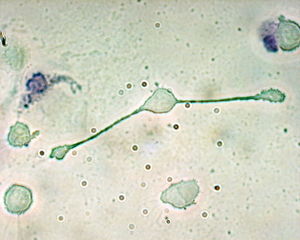
Increased stress and depression can also trigger latent viruses to reactivate and begin reproducing inside cells. The viruses of greatest interest are some herpes viruses such as the Epstein-Barr virus (EBV). We know that up to 90% of the people in North America have been infected by EBV by the time they are adults.
If EBV begins to multiply in cells in the body, it produces a protein called dUTpase that, in turn, can stimulate macrophages to make yet more IL-6.
The researchers developed a model to test these linkages by using endothelial cells that line the inside of veins in umbilical cord tissue. I spent years working with these cells myself, and they provide an excellent substrate for examining vascular responses and the interaction between blood vessels and macrophages when exposed to the virus as well as the dUTpase protein.
As expected, the production of IL-6, as well as TNF-a, were increased just as they would be as part of the inflammatory process in the body. Such chronic incidents of inflammation are integral to the onset of atherosclerosis and an array of other diseases.
This work suggests a new way of thinking about how vascular diseases develop. We carry around these latent herpes viruses in our bodies virtually all our lives and periodically they can hurt us as we age, develop depression or, perhaps a nutritional imbalance.
Taken together with the recent data on the physical effects of loneliness, if you want to live a long and healthy life:
- Watch you mood: depression can kill you
- Stay socially engaged: loneliness can be fatal
- Maintain a balanced diet
- Take some physical exercise every day
- Learn – and practice! – some simple stress management techniques. You can obtain some at RichardGPettyMD.com






